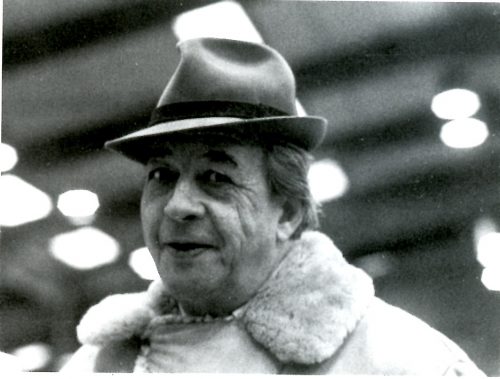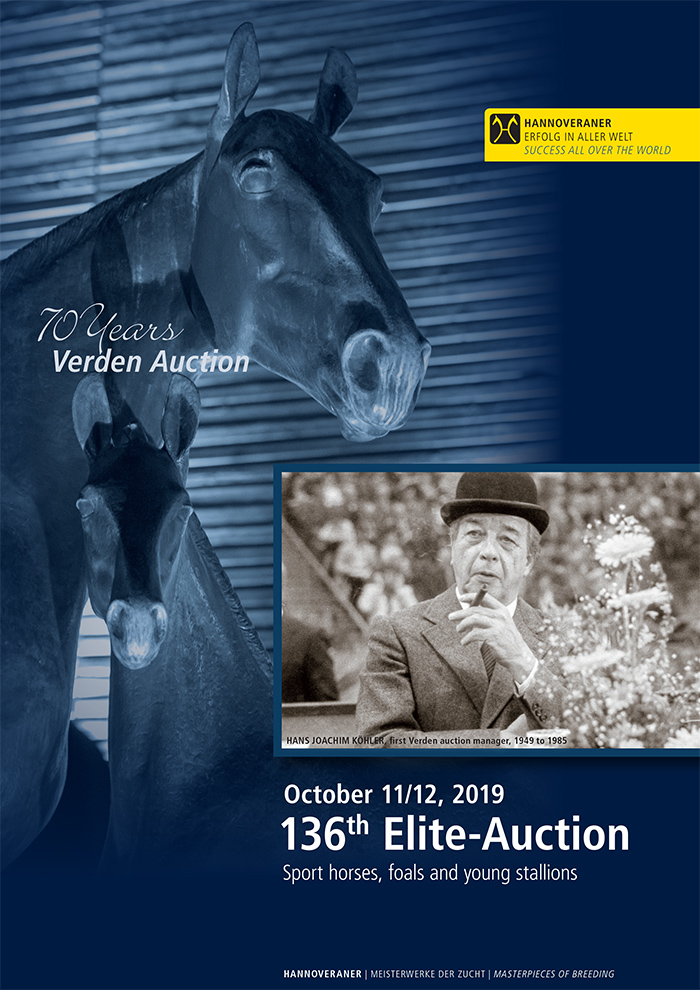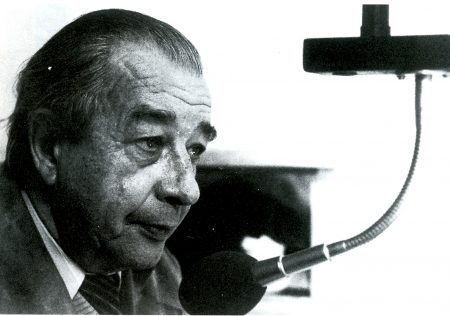
Hans Joachim Köhler was a key player in the make-over of the Hanoverian horse which saw it become THE dressage horse of choice throughout the world. This transformation was accelerated by the increased use of Thoroughbred and Trakehner blood. From 1945 to 1950, the proportion of Thoroughbred blood had fallen to 1.8% of the total population. By 1965, out of 160 stallions based at Celle, 6.9% were Thoroughbreds, a percentage that had risen to 11% by 1975, when 23 of 208 state stallions were Thoroughbred.
The Hanoverian was back and with an exceptional marketing and promotional campaign, ready to take on the world.
The hunt was on to breed a horse that would cater for the new sport horse market, and Hanover quickly led the way. This was a double-sided process. The Stallions in Celle became lighter, more ‘modern’ and at the same time the introduction of the first of the great modern performance horse auctions in Verden intensified the transition. The Verden Auction was the brainchild of the master horseman Hans Joachim Köhler, and if the breeders wanted to make money selling their horses at the Auction, they had to produce the sort of horse Köhler liked. And Köhler liked ‘blood’.
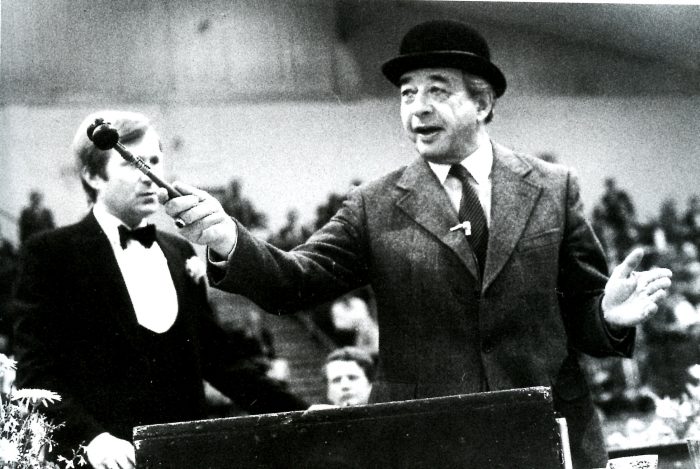
Köhler held his first auction in 1949. He retired 35 years and 70 elite auctions later, handing over responsibility to Reiner Kiel after the spring auction of 1984.
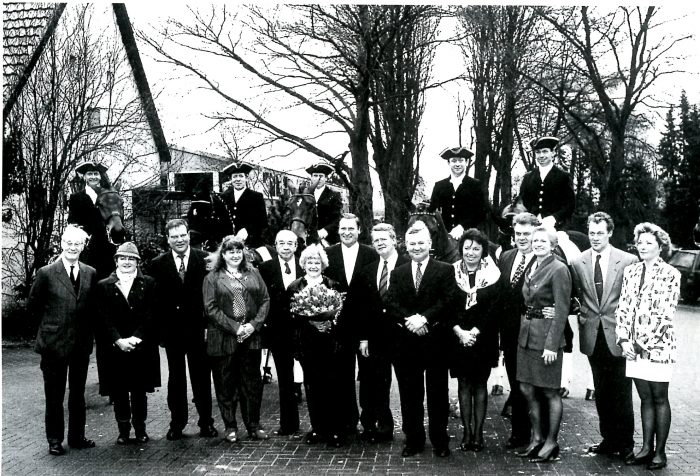
Köhler and his team…
Köhler was also instrumental in producing a group of exceptionally talented riders who came out of his auction team and went on to play key roles in the developing sport horse industry in Germany. Hans Günter Winkler was already a star when he became a member of the auction team in the early 50’s, but riders like Ulrich Kasselmann, and his wife, Bianca, who went on to establish Germany’s premier dressage horse sales centre, PSI, which was managed for many years by another former auction rider, Ulf Möller, one of the masters of the newly emerged young horse classes, learnt their craft under Herr Köhler with the assistance of Hungarian cavalry officer, Kalman de Jurenak. Riders like Holga Finken, another master of the Young Horse classes, Hans-Heinrich Meyer zu Strohen, current coach of Germany’s young dressage riders, and Holger Schmezer – who went on to coach of the German dressage team, all worked in the auction team. Others included Inge Theodorescu, mother of Monica, the current German dressage coach, Helga Köhler and Tjark Nagel. The long time public relations manager of the auction, Enno Hempel, also learnt the job ‘hands on’ starting as an auction rider in 1966.
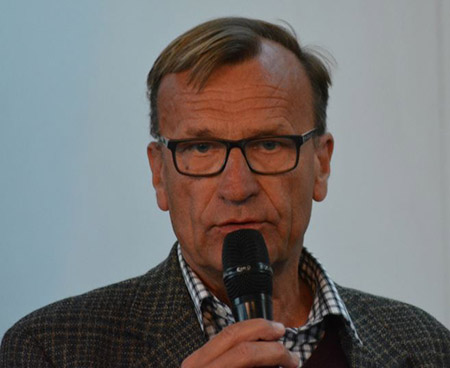
Enno Hempel was one of the legion of young men and women whose lives were turned around as a result of meeting Hans Joachim Köhler. Suddenly a part time university holiday job became a lifetime vocation. In Enno’s case he was to graduate from rider via customer services and assistant manager in marketing to journalist and publicist. He celebrated HJK’s life in an obituary in Der Hannoveraner, and later that year in Bernd Eylers’ annual stallion directory. The following words are an amalgam of the two:
He was a true hippologist, someone who always looked outside the box. To honor him is to honor HJK as a foster father. Many horse people – and I was one of them – have grown into the horse business, profited, learned, and grown under his guidance – perhaps the best known of these is Ullrich Kasselmann, the head of the largest private dressage selling operation in Germany. Many of them have enjoyed HJK as a godfather, and they were so willing to add their enthusiasm to his direction.
Although there had been auctions elsewhere before 1949, the paternity of the Verden auctions is clearly his. HJK was responsible for the vast system that has grown through the decades. More than 35 years of the development of the Hanoverian breed, and the development of the international viewpoint, that are the lifeblood of the Hanoverian, are his legacy. The entire horse culture of the present time has been informed by the life of HJK: by example, by genius, by consequence, by mistake; through productive and constructive criticism.
The background
His father Hans Köhler was the Landstallmeister of the Mecklenburgisches Landgestüt Redefin. HJK, born during the First World War, experienced his youth in the stud farm of Redefin and thus he was already learning in the cradle, that which would make the horseman. He also had mentors beyond the family home. Landoberstallmeister Gustav Rau in the field of Hippology and Hans-Joachim von Killisch-Horn in the field of journalism and marketing.
The High School in Berlin was less influential in his development than his time as a soldier. He was based at Parchim and the cavalry school Krampnitz, becoming a Major in the lead up to the Second World War. In the war, he lost his left leg but got back on horseback as fast as possible. As the commander with responsibility for 1,000 riders and horses, this was an important learning experience for HJK.
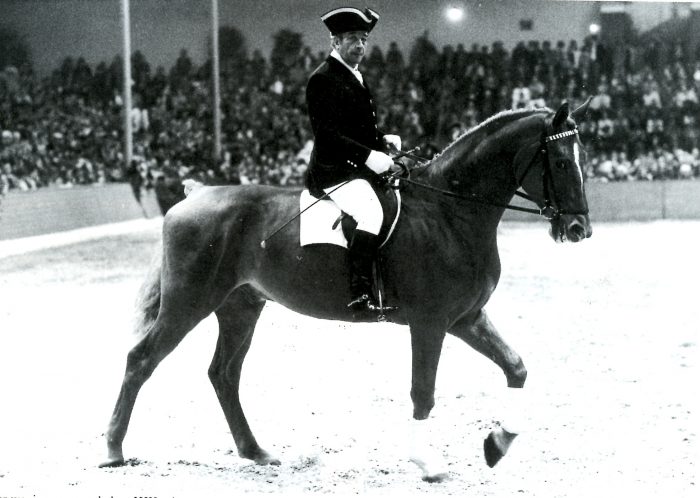
Fleeing from the Soviet occupiers at the end of the war, he gravitated to what was to become his life long commitment to the Hanoverian horse. First as an editor of the breeders’ magazine, thus the connection to the Verden scene, where the Hanoverian stallion licensing and where the Verden riding horse auctions found their home. At the time of the majority of horses were still agricultural, HJK already had his ideas of the modern riding horse and was one of the driving forces in the bringing the new model into being. Here, the Verden auction team under the leadership of HJK was a constant.
The new Niedersachsenhalle was another highlight in the 70s, here was a space with scope for ambitious goals. In all, the love for the detail remained, the appreciation of the individuality in each horse and each human counterpart, had the highest priority. The atmosphere created and the brilliance of the presentation sometimes had something daring, often something artistic, almost always something solid, hardly anything artificial. The expansion of auction types throughout the year, as well as the elite auctions, continued to set new standards. During this time he developed with enthusiasm, knowledge and scientific interest, the German Horse Museum in Verden, which still has a unique position in the world.
The personality of HJK was always shaped by creativity. His journalism had its own unmistakable style in the presentation of facts and anecdotes. The willingness to use poetic freedom made the writing entertaining and rich in content. All this informed by the pronounced sense of humor with a great sense for situation comedy.
At times his high degree of concentration gave the impression of unapproachability. Even if at times hardness was required, it was always mixed: determination and benevolence were always there, human warmth and honest responsiveness, commonplace. All in all, the quality of HJK’s leadership style has been unequaled so far. It was no surprise when HJK was awarded the German Order of merit (Bundesverdienstkreuz) in the 1980s.
Although the practitioner Köhler was often more an artist than a businessman, everything he turned to was touched by his fascinating charisma. It extended to his family and their home at Köhlerhof Estate. Very much a part of the team was his wife, Helga Köhler, who belonged to the auction rider team from the very beginning. She focused on showjumping and was one of the most successful lady riders over decades, a key rider in the Nation Cup team as German ambassadors in North America in the 1950s.
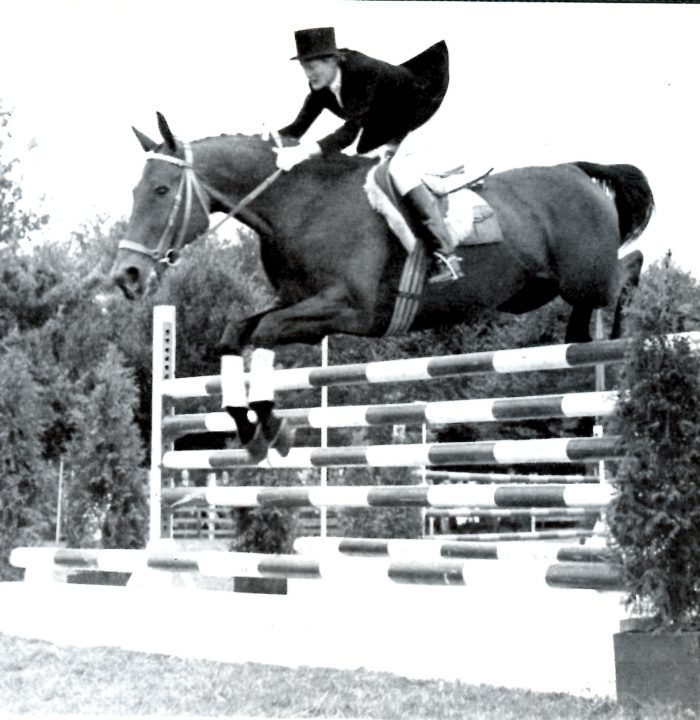
Helga Köhler – wife and showjumper
A late joy for HJK was to see the homegrown licensed and Hanoverian recognized stallion, Pygmalion recognized as the maternal grandsire of Stakkato, the horse that gave the Hanoverian show jumpers internationally a famous name again.
In his book “Biographical Notes of a Horse Rider”, HJK wrote: “Life goes on. The Lord directs and tells us to believe. He reminds us, be noble to strive in value-creating activity, to live in decent disposition, to let live. For many of us he gave the gift of love on horseback.”
Even today, the cigar scent still perfumes the file folders in the archives of the Auction, just as his influence and direction lives on in the memories of those touched by a remarkable life.
